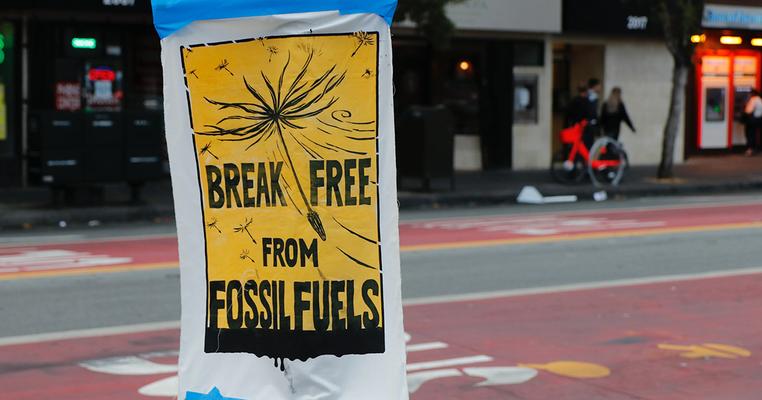
Concrete Plans for the Immediate Reduction of GHGs
Reduction in greenhouse gases, and the general decarbonization of the global economy, is central to ending the climate crisis. Good thing there are several different strategies to reduce emissions, ranging from the simple like planting a tree to the complex accounting taking place under schemes like carbon offsets.
Carbon offsets are a product that you as an individual can use to offset/cancel out your emissions on a plane ride. They are also bought by companies to help claim carbon neutrality or fulfill net-zero commitments. They vary in the mechanism behind the offset and they also vary in the legitimacy of their certification. Sometimes carbon offset projects do actually store or remit the carbon that they propose, but just as often, they are nothing more than accounting tricks and sometimes, outright fraud.
Carbon offsets will mature, and the products will be more accountable as the market develops. But until that happens, there are more actual and immediate actions to take for reducing greenhouse gases.
Let’s break down a few of them, from the individual and community levels all the way up to nation-level advocacy.
What You Can Do
From a personal perspective, reducing emissions can seem like an impossible task, given the incredible amounts of carbon dioxide that are released each year. But a personal commitment to reducing greenhouse gas emissions does not mean sacrificing everything in your life that you love. You can make concrete personal reductions and those reductions help. Every molecule of carbon needs to be reduced.
Plant a tree
Simple, relatively straightforward, and fun activity to do alone or with others. Often times you can get your place of employment, or education to help fund the purchasing of the trees so long as you put forth the manual labor. One hardwood tree saves, on average, 48 pounds of carbon per year. Make sure to consult local arborists on the best tree for your area, and to maximize carbon reductions.
Commute by foot, bike, or train
Emissions from transportation add up to nearly 30% of the total emissions in the US each year. By walking, biking, or taking the train or subway to work, you take an emitting car off the road. (Unless you are already driving an EV, of course. In which case, you go, Glen Coco!). Walking and biking have many co-benefits as well. They will increase your stamina and can be part of a healthy lifestyle.
What Your Community Can Do
Empowering local leaders to make the correct decision is a great way to reduce emissions. Mandate government buildings use clean power. Make sure your local utility is building solar farms and not natural gas plants.
Push your local government and utility to buy clean power
Federal legislation takes money and lobbyists to create change, but state and local governments are often a much more accessible and powerful lever in the decarbonization effort. Call your local representative and ask that the local government buildings use clean power. This can be done by building and generating the power themselves or contracting out that power through the local utility. Government buildings frequently use a lot of power, so greening that area is very real emission reduction opportunity.
Form or join a Community Choice Aggregation group
If it is legal in your state, join your fellow clean energy advocates by obtaining all of your power from clean energy sources. By joining the aggregation, you bring the power of thousands to millions of customers to the negotiating table with the utility or renewable energy developers. That’s a lot of leverage.
What Your Country Can Do
Right now in the United States, the federal government has been presented with an incredible opportunity to reduce greenhouse gas emissions. And we have the technology to do it.
Pass the reconciliation and infrastructure packages in Congress
These pieces of federal legislation are goldmines for decarbonization. They put forth hundreds of billions of dollars to green the power systems, transportation, and industrial sectors, alongside providing monies to research and develop young and maturing technologies.
This deep dive into new and improving existing technologies could have big implications around the world. And as nations everywhere carve out their government spending budgets – and develop plans to meet their NDC commitments under the Paris Agreement – climate advocates everywhere should be reaching out, speaking up, and demanding decarbonization plans be part of the path forward for their respective countries.
Pass a price on emissions
Very simply, if we want businesses and industry around the world to stop emitting, we need to hit their bottom line.
Emissions are harmful for human health and the environment, and that harm should come with a price, one applied to everything in the economy. How we price those emissions (taxes vs. cap-and-trade) depends on what policy outcomes we want to achieve. But either way, emitting businesses need to stop getting a free pass.
Take Action Today
Emission reductions must be addressed at all levels, and every molecule that doesn’t go into the atmosphere is important. Unlike accounting tricks, all of the actions outlined above, if taken, can immediately begin reducing emissions.
We need immediate action, to move quickly toward a zero-fossil fuel emissions economy in a globally just transition to clean energy. Our point of no return is nearly here. We have to get loud, now, and together demand the REAL policy changes that can save us from the worst degrees of warming.
Because our future is on the line – and this is our turning point on the climate crisis.
Join us and make yourself heard during 24 Hours of Reality: Let’s Get Real on October 29 by demanding real action from leaders who can make a meaningful difference for us all.

